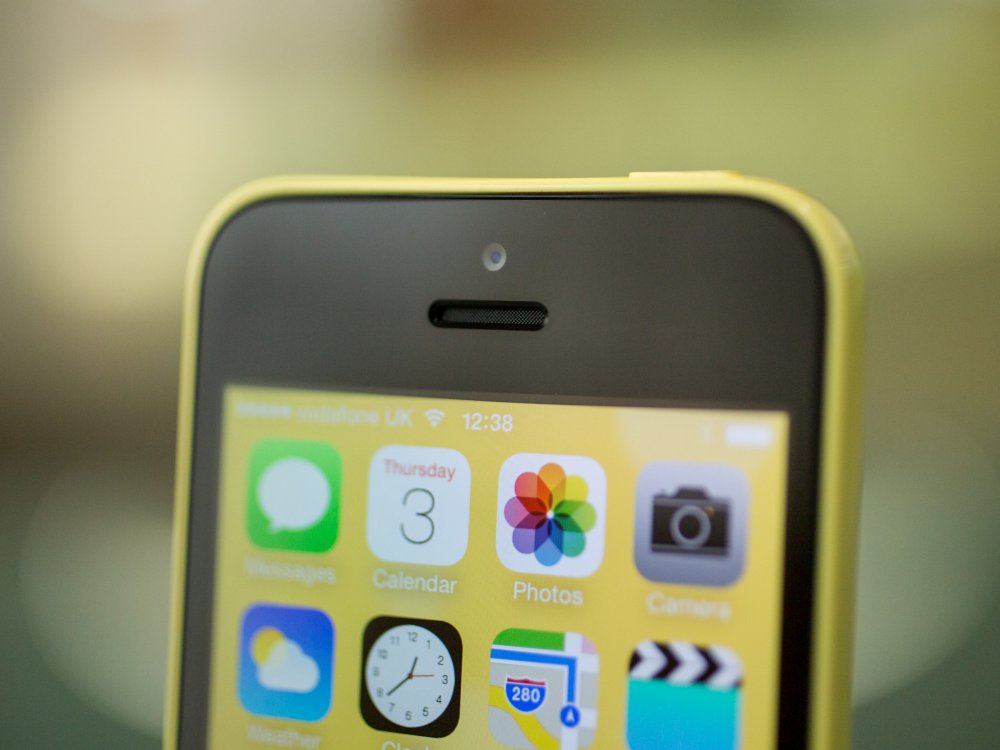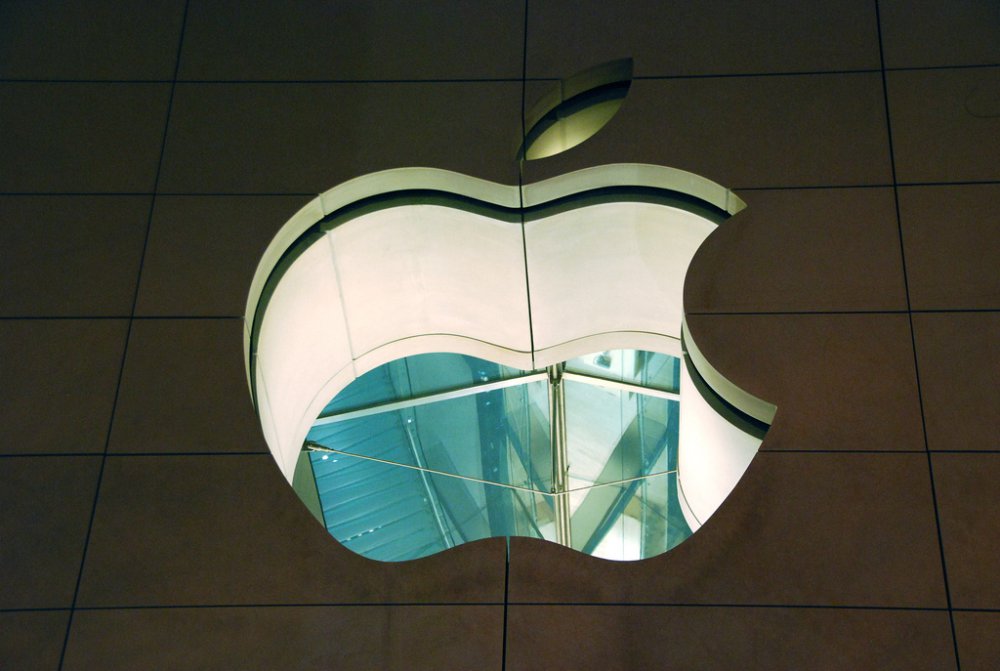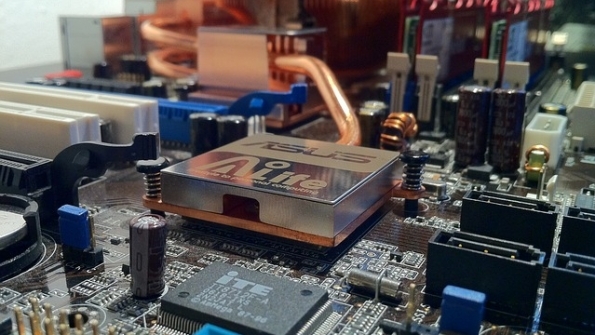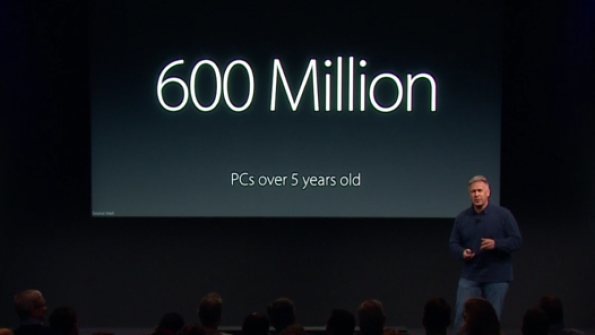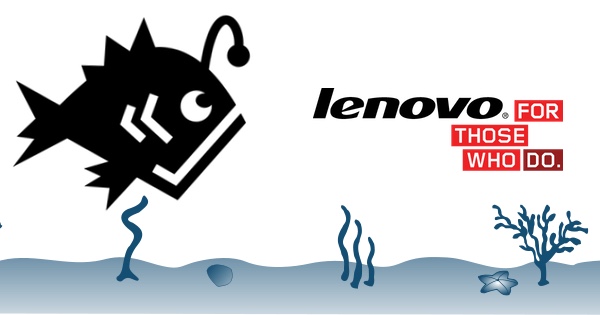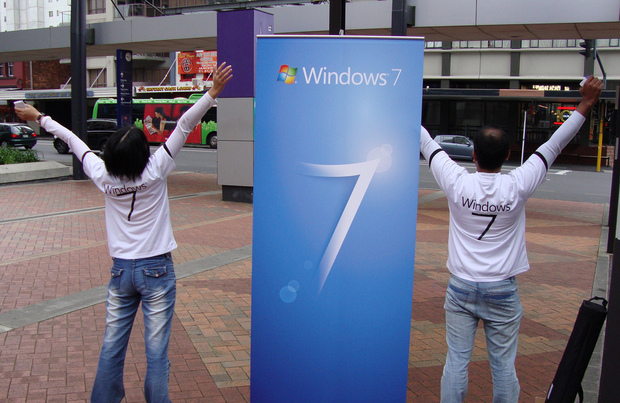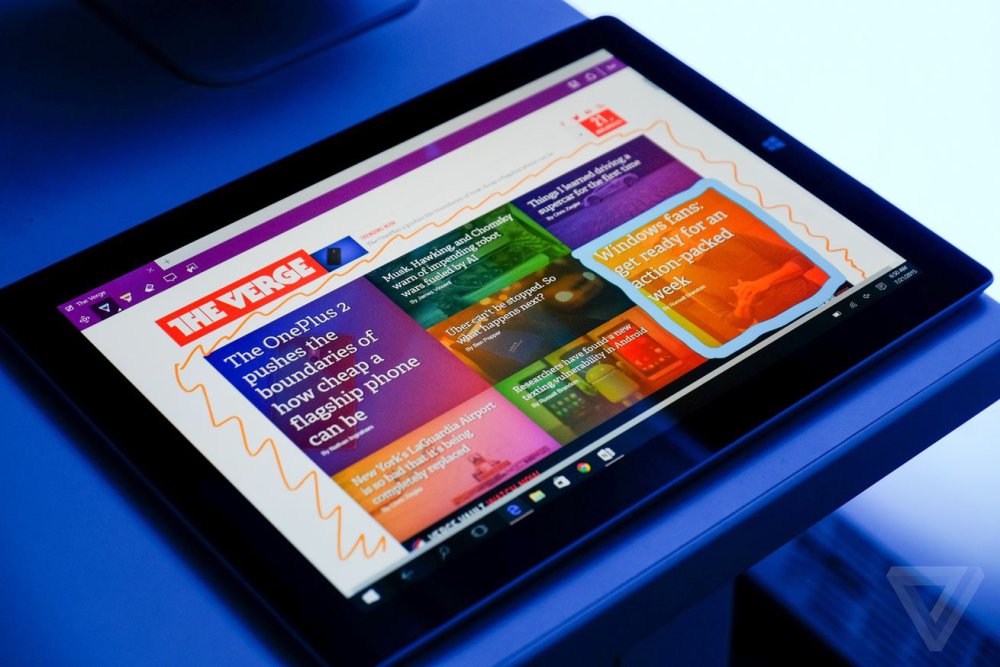-
Posts
7,282 -
Joined
-
Last visited
-
Days Won
2,416
Content Type
Forums
Blogs
Events
Resources
Downloads
Gallery
Store
Everything posted by allheart55 Cindy E
-
In the past we’ve reported on Target’s fuzzy math, retailers failing to understand what “clearance” means, and department stores being sued for allegedly inflating the original price of items in order make discounts look more attractive. These issues appear to have combined at Walmart, where one shopper says the company is running a “clearance conspiracy”: slapping clearance tags with much higher prices on formerly less expensive items. A Reddit user posted several photos he claims shows the nation’s largest retailer is running a ploy in which customers pay more for items on clearance than they would when the product was full-price, The Huffington Post reports. The photos show the clearance section and several items at a New Jersey Walmart. The man says in one instance, he found a flashlight on clearance with a sticker for $10.97. However, under that tag he found another Walmart sticker that showed the flashlight was previously being sold for $5.99. An XBOX 360 game showed a clearance sticker with the price $29.96, but, again, underneath that tag was another showing the price as $19. (SillyPickle) This was enough for the man, who didn’t address the issue with store employees, to proclaim, “I’ve uncovered a clearance conspiracy at Walmart.” A Walmart spokesperson denied the accusation, telling the Huffington Post that there was nothing funny happening in the clearance aisle. “This is an isolated incident and a pricing error in this store,” the spokesperson said, noting that had the man attempted to purchase one of the items he would have been charged the lower price. Shopper Photographs Apparent ‘Clearance Conspiracy’ At Walmart [Huffington Post]
- 6 replies
-
- clearance conspiracy
- ploy
-
(and 1 more)
Tagged with:
-
You know that part about the FBI needing Apple's help to unlock a terrorist's iPhone 5C? Never mind. That was the unexpected message from the US Department of Justice on Monday, when it indefinitely stalled court proceedings that had been scheduled for Tuesday. Now, instead of turning to the court, the Justice Department would try a mysterious technique it's heard about that could crack the phone's encryption without Apple's help. The feds had been pushing hard to get Apple to do the dirty work, a quest that burst into public view in February in a heated and high-stakes debate over the balance between personal privacy and national security. In the standoff, Apple had backing from across the technology industry, while the American public was deeply divided on which side to support. What trick could the FBI possibly have up its sleeve? Speculation is running wild among security experts, although a few theories are rising to the top. However it goes down, the FBI faces a tough technical challenge, in part because a wrong move could destroy the phone or erase its data. The solution would require some pretty creative thinking, said Ben Johnson of Carbon Black, which looks for software vulnerabilities. "It's like a movie where you're doing all sorts of things you wouldn't think of to break into a bank," Johnson said. NAND another thing Harry Potter spoke Parseltongue to get into the Chamber of Secrets. The FBI would have to resort to a less magical (and a lot more tedious) solution to getting into the iPhone. It's called NAND mirroring, and it requires copying part of the iPhone's memory. Right now, the iPhone will wipe itself clean after 10 wrong passcodes. But with a copy of the phone's flash memory, the FBI can just keep restoring the data. "It can then retry indefinitely," wrote ACLU technology fellow Daniel Kahn Gillmor. Gillmor wrote about NAND mirroring earlier this month, but that's when the FBI was publicly focused on forcing Apple to write a new version of the phone's operating system that would let it try unlimited passwords. Now Gillmor's theory is looking like the FBI's best bet. It wouldn't be as fast as a simple "brute force" effort password guessing, but it wouldn't require Apple's help. On Monday, forensic scientist Jonathan Zdziarski wrote his own explanation of NAND mirroring and argued that it was the FBI's most likely tool. Still, there are other possibilities. Exploiting a software flaw The feds could conceivably hack Apple's software running the iPhone through a software flaw, according to Johnson. That vulnerability might affect the way the phone works over wireless Internet, Bluetooth or cellular communications, or investigators might find a flawed app on the phone they could use to their advantage. Whatever it is, the flaw would have to be severe to let investigators all the way into the phone's core and tell it to open. The biggest problem with this theory is that security researchers are constantly on the hunt for these sorts of weak spots. If flaws exist, we'd probably know about them. "It's not really possible with so much attention being paid," Johnson said. It wouldn't necessarily be surprising if a hacker went to the FBI to offer assistance, rather than to Apple. Where companies including Microsoft, Google and Facebook routinely offer "bug bounties" to outsiders who report flaws they've discovered, Apple has largely kept its own counsel on security matters. An unintended consequence of that reluctance to embrace outsiders is that those finding flaws in Apple software can now fetch a good payday from less scrupulous sources. "Apple ... is never going to be able to compete with what is going on behind the scenes in the black market," Jay Kaplan, a former NSA analyst and co-founder of security firm Synack, told The New York Times. Acid and lasers Finally, the FBI could look at the chip that's storing the passcode. As Zdziarski describes it, investigators could remove the microprocessor from the iPhone and run it through a chemical treatment before hitting it with a laser. But like Dr. Evil's plan to put lasers on sharks, this one is pretty risky. One wrong move, Zdziarski said, and the chip would be ruined. Not only would the data be lost, there would no longer be any point in forcing Apple to write new software. The Justice Department said in its court filing Monday that it's been working on a technical solution during the entire legal dustup. Johnson compared the behind-the-scenes machinations to a football game, saying investigators have probably moved the ball as far forward as they can. "Maybe the FBI could get to fourth and one, but they need help [at that point]," he said. Their solution might take investigators all the way into the end zone, where they decrypt the phone, or it might stall out completely. On April 5, we'll know if it doesn't work. That's when the feds would come back and ask the court to force Apple to write that software. Source: cnet
-
- encryption
- fbi
-
(and 2 more)
Tagged with:
-

World's Fastest: 270.49 mph Hennessey Venom GT
allheart55 Cindy E replied to starbuck's topic in Tech Help and Discussions
:wow: Unbelievable! -
-
You're welcome, N3!
-
That's great news! Thanks for letting us know, Dougie. We'll be sure to give him a big welcome. Any friend of yours........is a friend of ours. :thumbsup:
-
WinPatrol should be in startup to be most effective. I don't believe GWX Control Monitor needs to be in startup.
-
Apple and the FBI have been fighting very publicly for the last month about national security, iPhones, and the intersection of privacy and encryption with those things. Their legal battle was supposed to be heard in court in California this afternoon — except the FBI has asked for a delay, saying that actually, maybe they don’t need Apple to create a backdoor to get what they want after all. A brief overview of the story so far: the FBI has in their possession an iPhone belonging to Syed Farook, one of the now-deceased shooters from the attack in San Bernardino last December. They want to search the contents of that iPhone as part of their continuing investigation. But they have a problem: the security feature that wipes the phone if the wrong PIN is entered too many times. They can’t ask what the PIN is or compel it, because the phone’s owner is dead. They can’t just brute-force it (going through every one of the 10,000 possible combinations in order) because if they put in too many incorrect entries they’ll lose the data they were hacking the phone to get at in the first place. The result was the FBI asking Apple to create a work-around version of iOS that would disable the security feature and let them hack the phone. In February, Apple publicly and in no uncertain terms refused to do so ever, and the PR battle has raged back and forth from there. But then, at the last minute, a sudden pause appeared when, on Monday, the FBI asked the court to skip today’s hearing after all — because it turns out, maybe they don’t need it. In the filing (PDF), the Feds say that “as a result of the worldwide publicity and attention on this case,” various third parties “outside the U.S. government” have reached out to contact them about possible ways they can successfully hack the phone without Apple’s help. One such unnamed party demonstrated a possible technique to the FBI on Sunday, and so the feds are requesting that today’s hearing be vacated (cancelled), and instead they will file a status report in two weeks saying whether they need to compel Apple to do anything or not after all. As Ars Technica points out, this might be a short-term win for Apple — certainly, they’ve put encryption into the mainstream conversation, and taken a strong stand — but in the long run it might be no better for any of us than if Apple and the FBI had gone to court today after all. That would have been a public hearing, on the record, with some of the country’s top legal talent arguing it out as a test case to form precedent. Instead, the FBI is now effectively saying, “ah, nevermind, we don’t actually need help to hack secure phones,” which is… not exactly a comforting thought to privacy and anti-surveillance advocates. Meanwhile, the cancellation of today’s hearing is unlikely to be the end of the issue. Smartphones and other encrypted, protected personal devices are where we keep our lives, and law enforcement is going to keep wanting access as needed. This phone and this case might go quiet, but another will pop up in the future. Source: consumerist
-
Me too, Dougie. If he finds that some of the Vista drivers do not work, we can help him find compatible Win 7 drivers through the vendor and hardware ID.
-
Yesterday, during the announcement of new hardware products, Apple's Phil Schiller pointed out that he thought it was a sad fact that over 600 million PC users were using machines that were over five years old. It seemed the statistic was intended to support the idea that those 600 million out of date users were the perfect target audience for moving over to the original IPad Pro and new smaller iPad Pro which was announced at the event. As we pointed out yesterday, many PC users on Twitter disagreed with the assumption and characterization of that group of users, and now today I want to take that one step further. I have spent many years building and upgrading my own computers and have not purchased a brand new OEM desktop machine in quite some time. I have learned over the course of those builds and upgrades that there are some key hardware components that can really extend the life of your older hardware, provide a bump in performance and cost much less than the cost of an iPad Pro and its accessories. Let's take a look at those different areas. Memory (RAM) Early on I learned that the quickest and easiest upgrade to an existing computer was to add extra memory for RAM. This memory is used as a temporary storage area of data as it moves to and from your hard drive for processing. Memory prices have fluctuated a lot of the last few years but there are many deals to be found on online sites such as Amazon, NewEgg, TigerDirect and even Best Buy's Marketplace. Always shop for your best deal and buy as much memory as your budget allows for what your motherboard will support. Be sure to check with your motherboard manufacturer or the OEM to know what your PCs memory configuration is exactly. While some retail stores like Best Buy and others carry RAM on the shelves it tends to be more expensive so I would avoid that and shop online with a reputable retailer with good electronics return policies. Solid State Drive (SSD) As the prices on SSDs have dropped over the last several years, they have become very solid alternatives to the spinning hard disks that are in most machines that are five years old. Spinning hard drives came in two speeds 5400 and 7200 RPMs. While the 7200 RPM drives were faster than the slower 5400 RPM drives, SSDs put those devices way back in their rear view mirror. Even large SSDs in the 240GB and higher range have come well down in price. A quick search of Amazon for "240GB SSD" shows five results with each priced under $70. You could easily grab two at that price for spare storage as well in your current PC. Most consumer SSDs use SATA based connections so make sure your older PC supports a SATA connection although a large majority of PCs built five years ago were already starting to support that configuration. If you happen to still have a computer based on IDE hard drives you may be able to use an IDE to SATA adapter to upgrade to an SSD and they cost less than $5 on Amazon. By the way, that old spinning hard drive which you are replacing with an SSD can be put to use in one of two ways. Either use it as a secondary storage option inside of your desktop machine or purchase a USB enclosure to create your own external storage device. Video Card Many older PCs use a video card onboard the systems motherboard to drive the display(s) attached to the PC. There are a lot of video card options available for PCI and PCIe with 1GB and 2GB of memory that might give you a higher resolution image than you are getting right now. One thing to keep an eye on when upgrading video cards is that some of the newer ones require additional power and need to plug into your systems power supply or a power port on your motherboard. Check with your hardware OEM to make sure the system does support that type of option for a new video card. Monitor Here is another area that can be a nice upgrade because what is the one thing we interact with more than any other part of our computer? Our monitor screen because that is where everything is displayed and all of our input is seen as it is being entered. These days you can pick up a 24 inch LCD monitor from Amazon in the $120 to $150 price range. If for some reason you still have a big CRT based monitor on your desk than the power and space savings of an LCD will be very welcomed. Another possibility, especially with an upgraded video card that supports it, is to use dual monitors. I have been using dual monitors for several years and could never imagine going back to a single screen - even one of those massive 37 inch curved ones. You can either get two matching monitors or go with one larger one then a smaller one alongside of it - whatever setup works best for you and your budget. Software Five years ago Windows 7 and Windows XP dominated the installed Windows hardware base. Windows 7 continues to run on a lot of machines out there while the slow fadeout into obscurity marches forward for Windows XP. In the fall of 2012 Windows 8 was released followed by the Windows 8.1 update the following year in 2013. Of course, last July Windows 10 was released as a free upgrade to existing Windows 7/8.1 users and that offer does not currently expire until 29 July 2016. I have tested Windows 10 on older hardware and it runs very well considering the age of those devices but if you combine a few of these hardware related upgrades along with Windows 10 you could see further performance improvements. Wrap Up They key to performing any hardware upgrades on older machines is understanding your computers specifications. As I have said earlier, contact the company who built your machine and ask them for those full specs so that you know exactly what to get in these various hardware categories for an upgrade. The other thing that is critical when buying these upgrades online is a retailer who has a good return policy that is easy to use. For me that has been Amazon who has provided the most friction free return options of any other company I have purchased from over the years. Source: winsupersite
- 1 reply
-
- 1
-

-
- new hardware
- out of date
-
(and 1 more)
Tagged with:
-
Earlier today Apple held their Spring press event to announce new hardware to the press and masses of their customers. However, one group of product users were dismissed as sad according to one of the on stage executives. During the presentation of all things iPad Pro, the 9.7 inch model announced today, Apple's Phil Schiller shared a stat with the audience that first hit social media timelines last week during the Samsung announcement for their new 2-in-1 Galaxy TabPro S for Windows 10. At the 46 minute mark in today's product keynote, Schiller shares that a large group of users that made the move to what is now the original iPad Pro were Windows users. He then goes on to share the stat we first heard last week from Samsung - that over 600 million PCs are five years or older. He then pronounced to the assembled crowd at the event that this fact was indeed sad. There was a smattering of nervous laughter and subdued applause and the reaction from fellow Apple executives at that very moment who were shown on camera after that tidbit was priceless. I felt like I was once again in a classic "Hi, I'm a PC and I'm a Mac" commercial. By the way, here is a GIF of the reaction as well: Source: winsupersite
-
Bill is correct. Most of the Vista drivers should work. The ones that don't can be gotten from the manufacturer web site.
-
-
Unless you’re happy reading the material that’s on your older Kindle right now forever and ever, you’ll want to heed Amazon’s advice, and quick: some e-readers will need to be updated by March 22, or they’ll lose the ability to connect to the Internet. Amazon has been emailing Kindle users to remind them and has posted a notice on the company website, but if you’ve been pishtoshing those warnings, you’ll want to listen up before it’s too late. Well, before it’s too late to update the devices automatically. First, check to see if your device is one of the below: • Kindle 1st Generation (2007) • Kindle 2nd Generation (2009) • Kindle DX 2nd Generation (2009) • Kindle Keyboard 3rd Generation (2010) • Kindle 4th Generation (2011) • Kindle 5th Generation (2012) • Kindle Touch 4th Generation (2011) • Kindle Paperwhite 5th Generation (2012) If it is, turn it on and it should automatically download and install the update, if they’re connected to WiFi. Clicking “Sync and Check for Items” in the menu will also get the update running — again, if you’re connected to WiFi and not just using a wireless connection. If you find yourself smacking your forehead on March 23 because you forgot to update your Kindle, you’ll see this message: “Your Kindle is unable to connect at this time. Please make sure you are within wireless range and try again. If the problem persists, please restart your Kindle from the Menu in Settings and try again.” All is not lost at that point, however. All you have to do is manually download the update file from the Amazon website, and then import it to your Kindle using a USB cable. For more detailed information and help on that process, check out Amazon’s help page here. March 21, 2016 By Mary Beth Quirk Source: consumerist
-
Attackers recently compromised the start page used by Lenovo PC customers in order to redirect users to the malicious Angler exploit kit. F-Secure security advisor Sean Sullivan explains in a blog post how upstream detection reports from the security firm's clients indicate that the compromise occurred on March 13th: "For some (relatively short) period of time, the portal site 'startpage.lenovo.com' redirected visitors towards the infamous Angler exploit kit." The notorious Angler exploit kit is well known in the world of crypto-ransomware. Back in October of last year, researchers with Cisco's Talos Security Intelligence and Research Group helped block about half of the exploit kit's malicious activity. That is an impressive feat, though Angler remains active to this day. Most recently, the Angler exploit kit was observed in a drive-by campaign that dropped CryptoWall 4.0 ransomware, two malvertising campaigns targeting Skype users and the Wajam browser add-on, and even a Guardian article unknowingly ironically entitled, "Cybercrime: is it out of control?" In the meantime, Lenovo is still engaged in an ongoing struggle to regain the trust of its users following the Superfish fiasco last year. The Chinese computer technology company did promise a safer PC experience shortly afterwards, but the discovery of rootkit-like utilities, privilege escalation vulnerabilities, and insecure default password configurations in its SHAREit application suggest this is a battle that it is struggling to win. It's not even the first time Lenovo has had embarrassing security failures in relation to its online presence. Who can forget that a year ago, the company's website briefly had its DNS entries hijacked by the Lizard Squad hacking group in order to play a song from teeny-bop Disney flick "High School Musical"? It's unlikely this compromise will help Lenovo improve upon that negative image. With that in mind, we can only hope that Lenovo's start page received very little traffic on Sunday evening. Exploit kits such as Angler scan unpatched software for vulnerabilities that they can leverage to install malware onto victims' computers. It is therefore important that users always implement software updates as soon as they become available and exercise caution when clicking on ads they come across on the web. Source: grahamcluley
-

How Long It Takes to Break a Passcode
allheart55 Cindy E replied to allheart55 Cindy E's topic in Tech Help and Discussions
I used to have a fifteen letter and number passphrase for my Yahoo ID. It was hacked two years ago. I was really surprised that it happened. The person that did it had a Russian IP address.- 2 replies
-
- brute-force
- hacker
-
(and 1 more)
Tagged with:
-

How Long It Takes to Break a Passcode
allheart55 Cindy E posted a topic in Tech Help and Discussions
Four to six digits stand between most iPhone users' personal data and the prying eyes of snoops, criminals, and investigators. To access records stored within, a hacker has little choice but to barrage a lock screen with possible PINs until the electronic tumblers click. Problematically, these "brute-force" attempts trigger built-in time delays--and potential data wipes. A court recently ordered Apple to develop an operating system stripped of such barriers to aid an FBI investigation into the December shootings in San Bernardino, Calif. The company has emphatically objected for fear that the tool could be abused. Depending on the strength of a user's passcode, however, anyone's iPhone could easily remain a black box. Use the tool below to test how long on average it would take some to crack various passcodes in a world where a crippled version of Apple's software--of the sort that law enforcement desires--hypothetically got out into the wild. Though Fortune doesn't store any of the entered information, we do not advise punching in your actual passcode. Who knows what key-loggers or man-in-the-middle attackers might be lurking on your machine or network? Want to boost your security? Consider increasing the number (or type) of characters required to unlock your handset. Here are 10 simple steps for anyone running iOS 9, the latest version of Apple's operating system. Just first make sure there aren't any people (or cameras!) peering over your shoulder. 1.) Unlock your phone. 2.) Tap the "Settings" icon. 3.) Tap "Touch ID & Passcode" or "Passcode." 4.) Enter current passcode. 5.) Tap "Change Passcode." 6.) Enter current passcode. 7.) Tap "Passcode Options." 8.) Tap "Custom Alphanumeric Code." 9.) Create your new passcode using a combination of numbers, case sensitive letters, and special characters. 10.) Celebrate your newfound security! And remember this passcode! For more, here’s a handy breakdown of how long on average it might take to break a passcode: View photo . Source: yahoo- 2 replies
-
- brute-force
- hacker
-
(and 1 more)
Tagged with:
-
Microsoft held a party with overtly sexist themes at GDC 2016 this week — one that Xbox chief Phil Spencer today called "unequivocally wrong." It's a troubling incident in a long history of sexism at professional conferences and events in the gaming industry, especially considering Microsoft's enormous influence. The party, which showcased women in revealing costumes dancing on podiums, served to alienate several attendees who shared their discomfort and disappointment online. Spencer quickly denounced and disavowed his company's actions today, stating that the event "represented Xbox and Microsoft in a way that was not consistent or aligned to our values." He said the behavior "will not be tolerated" and that Microsoft "will do better in the future." It's not clear yet how the company will take corrective action or to what extent — Microsoft declined to comment on next steps as it investigates the matter, and plans to handle the matter internally. But The Verge did obtain an email Spencer sent to his the entire Xbox staff today, which you can read below: Source: theverge
-
Windows 7 and 8 users know all about Windows 10. They’ve probably seen an icon advertising the new operating system in their system tray for more than half a year, and put up with more than a few pop-up ads asking them to install the free upgrade. If you have Windows Update enabled, the install files are likely already on your computer, and there have even been reports of Windows 10 installing without any authorization from users whatsoever. Isn’t there some way to outright stop Windows 10 from installing on your machine? And moreover, to make that icon and the pop-ups, just disappear? As it turns out, there is. Windows 10 is a free upgrade for users of Windows 7, 8, and 8.1 users, and we recommended it. At the same time, we know not everyone wants the latest system from Microsoft, for a variety of reasons. Maybe you depend on software that’s not supported, or maybe you just don’t want to switch operating systems right now. Here are two ways to make sure this doesn’t happen. The easy way: Install GWX Control Panel, then click some buttons The simplest way to make sure you won’t accidentally end up with Windows 10 is a program called GWX Control Panel. You can download it free from the Ultimate Outsider website. There’s an install file, and a portable instance of the application. Once downloaded, open the program and you’ll see an overview of various Windows 10-related settings on your computer, along with a number of features that help “protect” you from Microsoft’s free OS upgrade. This can be intimidating at first glance, but don’t panic. The top boxes show you which upgrade-centric features are currently enabled on your computer, and the Status and settings summary box sums it all up in plain English. The buttons at the bottom of the application are where the real action is, though. These let you stop Windows 10 from installing. Let’s go through these buttons, explaining what they do. The Disable ‘Get Windows 10’ App button will disable the tray icon that keeps “reminding” you about the Free Windows 10 upgrade, as well as the periodic pop-ups. The Prevent Windows 10 Upgrades button will stop any and all Windows Updates related to Windows 10, and stop the “Upgrade to Windows 10” message from being prominently placed in Windows Update. The Delete Windows 10 Download Folders button will delete the parts of Windows 10 already downloaded to your system, if they’re there. The Delete Windows 10 Programs button will remove programs on your computer designed to get your system ready for Windows 10 upgrades. The Change Windows Update Settings button opens up a new window, where you can stop Windows Update from automatically installing new updates. You probably don’t need to do this to stop Windows 10 from installing, and it could be a security risk if you forget to install patches, but some users might want to be sure. The Click to Clear Windows Update Cache button will clear out lingering download information that may or may not be related to Windows 10. The Enable Monitor Mode button will set GWX Control Panel to run in the background of your computer, with an icon on the system tray. From here, it can let you know if anything related to Windows 10 is changed on your system. If you’re feeling overwhelmed, don’t panic. Just click the Disable ‘Get Windows 10’ App and the Prevent Windows 10 Upgrades buttons and you should be covered. For a little extra protection, click Enable Monitor Mode and you’ll be warned if anything changes. The rest of the buttons might be overkill, but worth using if you’re extremely worried about Windows 10 showing up. The hard way: Toggle Windows Update yourself, then watch it closely If you’d rather not rely on a third-party application to stop Windows 10 from installing, you could become hyper-vigilant instead. Head to the Control Panel, then System and Security, then Turn automatic updating on or off. Source: yahootech
- 5 replies
-
- 2
-

-
- free upgrade
- windows 10
-
(and 1 more)
Tagged with:
-
Microsoft today retreated from an earlier retirement date for Windows 7 and 8.1 support on newer hardware, saying that it would now support those OSes on PCs running Intel's Skylake silicon until July 2018. The decision is a partial rollback of a January announcement that Microsoft called a "clarification" of its support policy. Under the January plan, Microsoft would have ended support for Windows 7 and Windows 8.1 on July 17, 2017, if the operating systems were powering machines equipped with its now-current Skylake processor family. At the time, Microsoft credited the decision to Windows 7's age and the hassle that Microsoft and OEMs would have to go through to ensure the 2009 operating system runs on Intel's latest architecture. "As partners make customizations to legacy device drivers, services, and firmware settings, customers are likely to see regressions with Windows 7 ongoing servicing," Terry Myerson, Microsoft's top Windows and devices executive, said in a Jan. 15 blog post. The move was the first time Microsoft had mandated a broad restriction on what edition of Windows customers could run on which hardware. Some analysts saw it as yet another tactic in Microsoft's strategy to coerce customers into adopting Windows 10. On Friday, Microsoft backpedaled. Support for Windows 7 and 8.1 on certain Skylake PCs will now continue until July 17, 2018, a one-year extension from the original deadline. After that date, Microsoft and its computer-making partners will not guarantee that they will revise device drivers to support those editions of Windows on newer h Microsoft, OEMs supply lists of Skylake PCs that will receive Windows 7 an Microsoft acknowledged that its change of mind had been driven by complaints from the firm's most important customers. "Since [January] we've received feedback from customers at various stages of planning and deployment of Windows 10," wrote Jeremy Korst, general manager of Windows marketing in a Friday post. "Led by their feedback, today we are sharing a few updates to our Skylake support policy." "They got both direct and indirect feedback on this," said Wes Miller, an analyst with Directions on Microsoft. "The feedback from Lenovo, for example, spoke volumes." Miller was referring to comments a Lenovo executive made last week during a call with partners. As reported by Channelnomics.com, Adrienne Mueller, Lenovo's North America ThinkPad product manager, said Microsoft should back off the 18-month deadline of July 2017. "The thought here is that Microsoft is really just pushing customers to move to Windows 10," Mueller said. "A lot of reactions from our customers ... is, 'Can we influence Microsoft and tell them they're not ready to transition and try to get them to prolong support on that?' We've tried, and Microsoft's not really willing to do that." Microsoft is now. "This is good news," Miller said. "Businesses needed more of a runway to really say, 'Here's our phase-out of Windows 7, and our phase-in of Windows 10.'" Some parts of Microsoft's revamped Windows 7 and 8.1 support policies did not change today: Microsoft still expects customers to upgrade their Skylake PCs Windows 10 by the new deadline, and the declaration that post-Skylake silicon will support only Windows 10 remained intact. Source: computerworld
-
Microsoft is ready for Windows 10 testers to start using Edge browser extensions. After an extended wait for the beta feature, Microsoft is releasing Windows 10 build 14291 today with browser extensions support for Edge. Microsoft will offer three extensions to test, including Microsoft Translator, a Reddit extension, and Mouse Gestures. Each extension can be manually installed, and because of the way Microsoft has crafted its extensions support they can also be installed in Google Chrome. Microsoft has chosen to make it easier for developers to port their Chrome extensions over to Edge. While the software maker is only releasing three basic extensions today, developers will be able to create their own extensions easily. "We’re participating in the W3C Browser Extension Community Group’s efforts to define standardized extension APIs based on familiar web technologies," says a Microsoft spokesperson. "Today, we’re previewing our first step towards that goal." Extensions will be available in the Windows Store once the feature ships later this year to all Windows 10 users. Microsoft is promising that AdBlock, Adblock Plus, Amazon, LastPass, and Evernote extensions will be available later this year. Right now, this is just an early look at how extensions will function in Microsoft Edge, but the company plans to update the experience as it continues to test its latest Windows 10 updates. Source: theverge
- 2 replies
-
- edge browser extensions
- microsoft
-
(and 1 more)
Tagged with:


